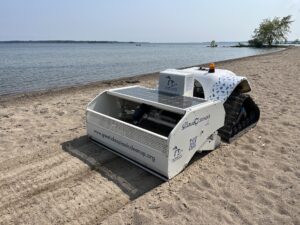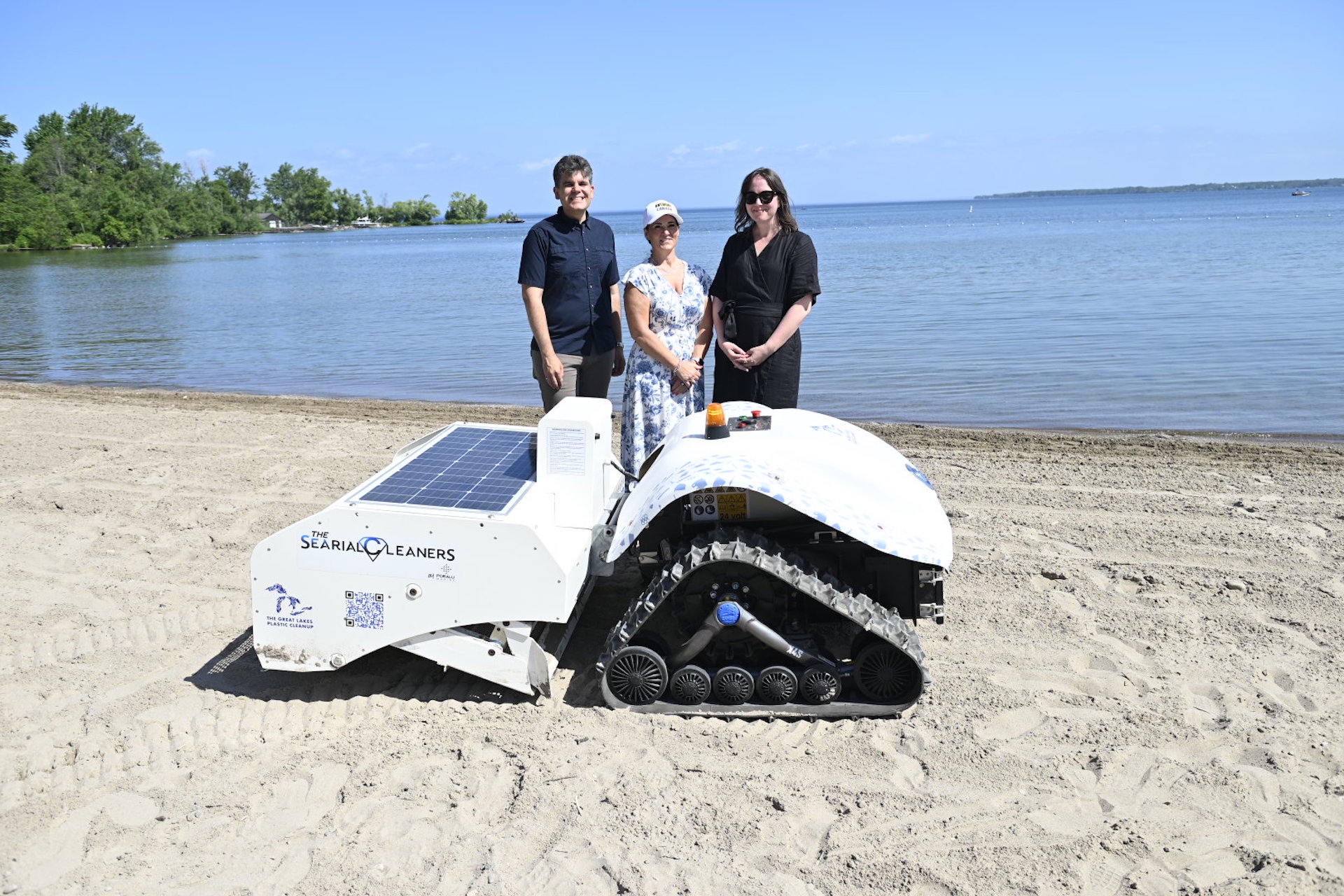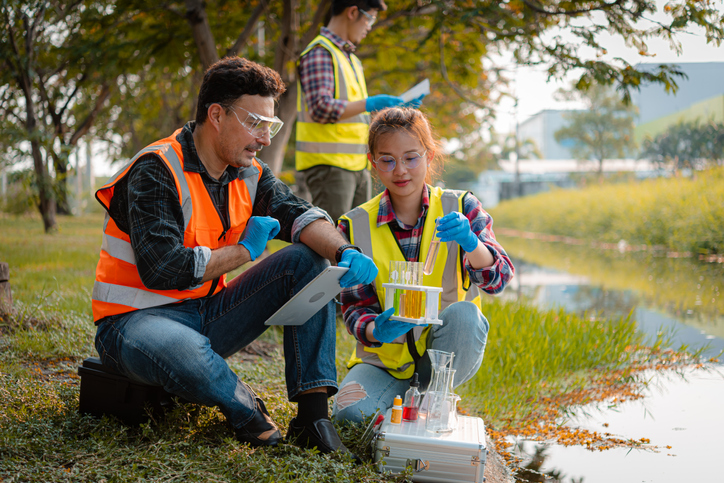Tuesday, September 23, 2025
Yesterday, the Canadian environmental not-for-profit, Pollution Probe, launched Canada’s very first BeBot remote-controlled, beach cleaning robot, as part of the Great Lakes Plastic Cleanup, the largest initiative of its kind aimed at ending plastic pollution in and around the Great Lakes.
Pollution Probe will pilot the beach cleaning robot at select Ontario Parks beaches across the Great Lakes region over the summer in partnership with the Ontario Ministry of the Environment, Conservation and Parks. The BeBot will begin its work on the shores of Lake Simcoe, at Sibbald Point Provincial Park, before travelling to other priority Ontario Parks locations on Lake Huron, Lake Erie and Lake Ontario.
Unsmoke Canada played a role in helping to bring the BeBot beach cleaning robot to Canadian beaches where it will help with the collection of plastic and other debris before it flows into or re-enters the Great Lakes, by contributing funding to support procurement and deployment.
The Great Lakes Plastic Cleanup, an initiative of Pollution Probe and the Council of the Great Lakes Region, currently operates at more than 225 sites across the binational Great Lakes region, including the St. Lawrence River and Lake Simcoe, working alongside more than 140 partners and collaborators. The new BeBot will join over 160 plastic capture technologies already deployed by the initiative throughout the Great Lakes since its inception in 2020.
“The five Great Lakes make up the largest freshwater system in the world, and working to protect them from plastic pollution is critical to ensuring their long-term health and that of the incredible array of ecosystems and wildlife found across the region.” said Melissa DeYoung, CEO, Pollution Probe. “We are excited to be working together with Unsmoke Canada and the Ontario Ministry of the Environment, Conservation and Parks to pilot the technologies and solutions needed to make an even more significant impact in the fight against plastic pollution across the region.”
 The BeBot will be deployed to priority Ontario Parks locations on
The BeBot will be deployed to priority Ontario Parks locations on
Lake Simcoe, Lake Huron, Lake Erie and Lake Ontario.
The BeBot has a sieving capacity of 100 litres per cycle —equivalent to approximately 14 basketballs. It can clean up to 3,000 m2 per hour for up to eight hours on a single charge and sifting down to 4 mm below the sand’s surface. The beach cleaning robot will target debris found on sandy beaches, including food wrappers, bottles, cigarette butts and plastic pieces that have broken down into fragments. The mobile nature of the technology dramatically expands the reach of the initiative, enabling the engagement of new sites and communities across the region.
In addition to removing plastic from the environment, the technology is a powerful tool for public education and engagement. Through hands-on participation in plastic collection efforts, community members form tangible connections with local waterbodies and the issue of plastic pollution. This personal experience fosters environmental stewardship and empowers them to become advocates for change.
“Protecting the Great Lakes means taking bold and innovative action, and the BeBot is truly an exciting new tool in our fight against plastic pollution,” said Andrew Dowie, Parliamentary Assistant to the Minister of the Environment, Conservation and Parks. “Our government stands proudly in support of the Great Lakes Plastics Cleanup partnership, bringing Ontarians cleaner beaches, building awareness and inspiring lasting change to protect the environment for future generations.”
To date, the Great Lakes Plastic Cleanup initiative has already reported the removal of more than 244,000 pieces of floating waste including plastic debris, bottles, cigarette butts, food wrappers and more. The majority of the plastic removed to-date are microplastics, including small plastic fragments, foam pieces, and pre-production plastic pellets but the new beach cleaning robot is anticipated to shift the data profile and contribute to new types of plastic being reported in greater quantities.
For additional information about the Great Lakes Plastic Cleanup visit www.greatlakesplasticcleanup.org
For video footage, CLICK HERE
Featured image credit: Actual Media. Inc.












